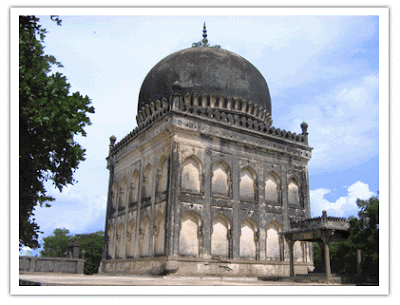
This about my native place....
Vellore Fort is a large historic 16th Century fort situated in Vellore town near Chennai in Tamil Nadu, India. It passed from the Nayaks to Bijapur Sultans, then Marathas and to Carnatic Nawabs and finally to British till Independence. During the British rule the fort had Tipu Sultan's family and the last Nayak king of Kandy (Sri Lanka) in captivity. The Fort also houses a Hindu temple, Christian church and Muslim mosque. The first rebellion against British rule erupted at this fort in 1806. The Fort is considered to be one the best specimen of a ground fort in
India and the Temple within the Fort is famous for the magnificent carvings. The Fort is also a witness to the tragic massacre of the Vijayanagara royal family of Emperor Sriranga Raya.
The present day Chennai region and Tirupathi were under the domains of this Fort.
Construction:

The Built area is around 133 acres, situated within the broken range of Eastern Ghats near Palar riverbanks. The walls are constructed using heavy blocks of green granite rocks sourced from nearby hills in Arcot and Chitoor Districts.
The fortification consists of a main rampart broken at irregular intervals by round towers and rectangular projections. The fort is surrounded by a moat which was once filled with crocodiles to create a extra line of defense. This broad moat is fed with water by subterranean drains from the Suryagunta tank. The fort is considered to one of the most perfect specimens of military architecture in
Southern India and is known for its grand ramparts, wide moat and robust masonry. The Vellore Fort is now maintained by the Archaeological Survey of India.
There is supposed to be a tunnel deep below the fort leading to a temple in a village known as Virinjipuram exactly 12 Kms away. The king used that in order to escape if there were any major attacks. The tunnel still exist but its been closed due to some problems, the mouth of the tunnel in Virinjipuram temple can be seen. It is placed near mother goddess. Its remained closed for years since there might be dangerous gas or reptiles inside. Some people say that some archeologists have tried exploring that but didn't return.
Jalakanteswarar Temple

The large impressive Siva temple was built about the same time as the fort in
Vijayanagara architecture style and is located on the Northern wall within the fort. The lingam of Lord Shiva gets its name from the natural underground spring upon which it resides, on of the reasons why the moat has never dried, no matter how severe a drought. Named after Jalakanteswara, or “Lord Siva residing in the water”, the temple has a Nataraja Siva deity on the northern altar and Siva-lingam on the western altar.
The 30m (100ft) high, seven-storey Gopuram is made of blue granite, flanked by two carved dwarpalas (door guards). The temple is renowned for the magnificent carvings on the pillars of the kalyana mandapam (Marriage Hall) which are fashioned as rearing lions, horses with riders, yalis and other mythical beasts and considered to be one of the most impressive in India. The temple itself is now cared for by a trust and re-established as a place of worship.
Mosque
First Sepoy Mutiny

In 1806, the Vellore fort was used by the British to station Infantry Military units of the Madras Regiment.The British Commander in chief of the Madras Army prescribed a new round hat for soldiers replacing the turbans and removal of beards, caste markings and jewellery, which the Sepoys considered offensive and were further fuelled by rumours that the hat was made of the hide of cows and
pigs.
On July 10, 1806, before sunrise, Indian Sepoys stationed in the Fort attacked the European barracks stationed there, and by late morning killed around 15 Officers and 100 English soldiers and ransacking their houses. Some of the rebelling Soldiers also instigated the sons of Tipu Sultan to lead the campaign. The news quickly reached a Colonel commanding the Cavalry Cantonment in
Arcot, who reached the Fort reached with heavy battalions and quickly put down the rebelling solders. The rebelling native Sepoys numbering more than 800 were
mercilessly hounded and killed. By noon the rebellion was put down. The events lead to a Court inquiry by the British who also decided to shift Tipu Sultans family from Vellore to faraway Calcutta in isolation.
Arcot, who reached the Fort reached with heavy battalions and quickly put down the rebelling solders. The rebelling native Sepoys numbering more than 800 were
mercilessly hounded and killed. By noon the rebellion was put down. The events lead to a Court inquiry by the British who also decided to shift Tipu Sultans family from Vellore to faraway Calcutta in isolation.
The news of the Vellore Rebellion sent shockwaves in England. The Governor, William Bentinck and Commander-in-Chief of the Madras Army, Sir John Cradock both were recalled on this count.
Family of Tipu Sultan
The Tombs of Bakshi Begum (d.1806), widow of Hyder Ali and Padshah Begum, Tipu's wife, who died in 1834 are located with a kilometre to the eastern side of the Fort.


















